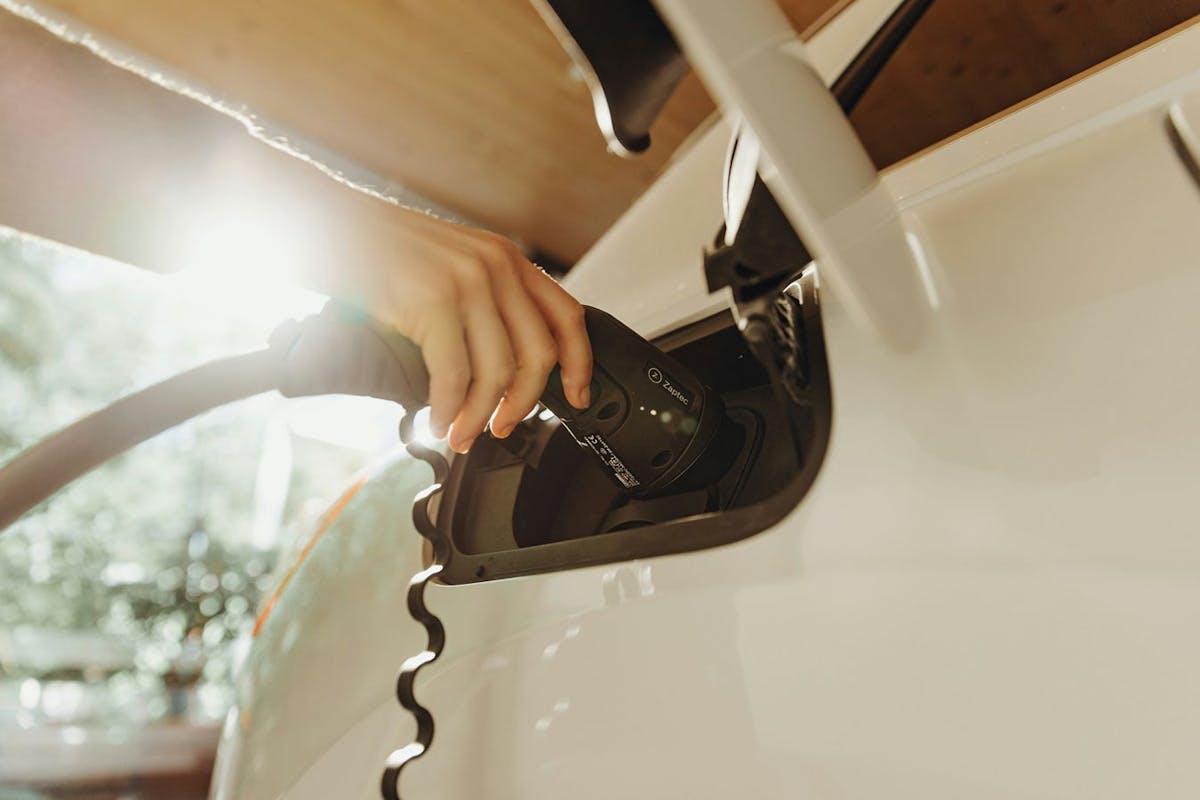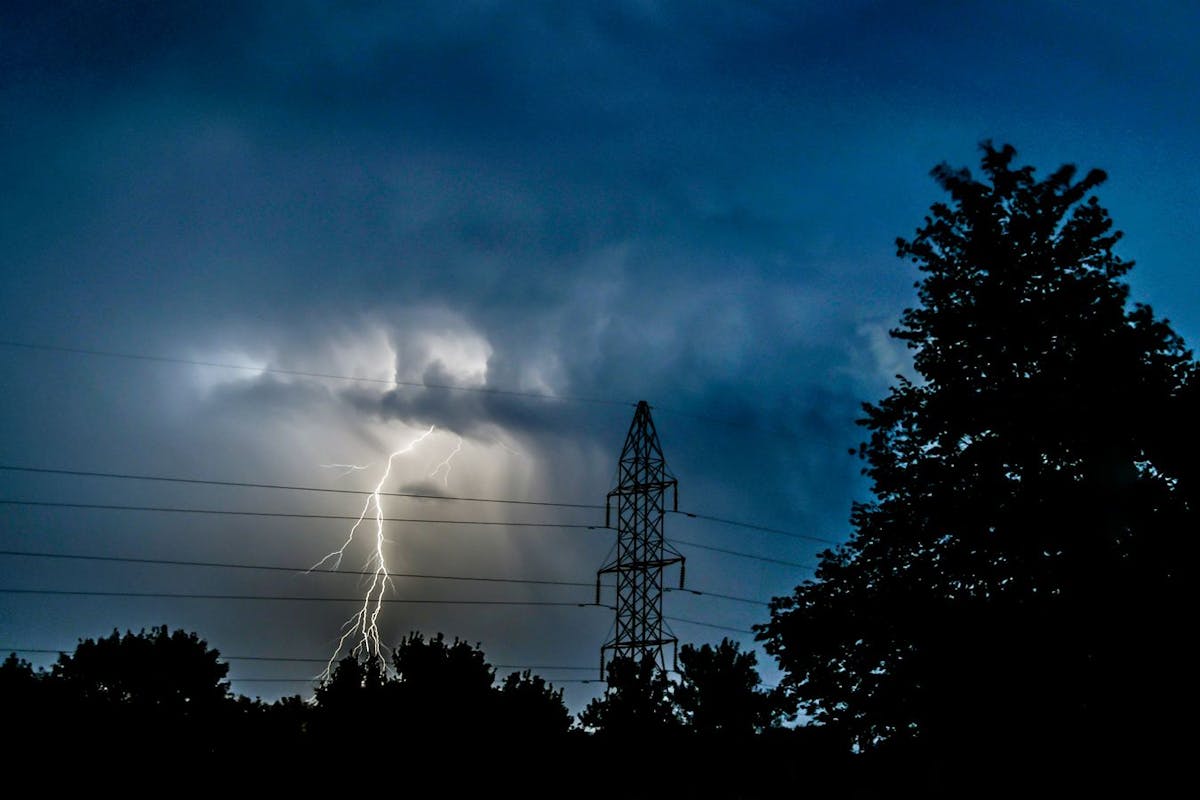How Long Does it Take to Charge an EV? EV Charging Times and Tips
Last edited

Author
Andrew Blok
Electrification and Solar Writer and Editor

Editor
Andrew Giermak
Solar and Electrification Writer and Editor

Let's get one thing out of the way: charging an EV takes longer than gassing up an internal combustion vehicle.
But, in many cases, for most EV drivers, you can charge an EV while you’re sleeping, cooking dinner, working, or throughout the weekend, so it’s usually more convenient and less expensive than filling up at the gas station. Thanks to the rise of home charging, stopping for gas (or a charge) may be a thing of the past for some people. Even people who can't install a charger at home will likely find chargers at places they already go, and as charging infrastructure continues to expand, opportunities like that will only increase.
How long does it take to charge an electric car? Here’s what you need to know.
See how much you can save with home energy changes
What determines EV charging time?
Charging time differs by vehicle, battery type, the state of charge, the current weather, and more.
- Battery size: The larger the battery, the longer it can take to fully charge. In most scenarios, you don’t need, and it’s actually not recommended to have, a fully-charged battery.
- Charger type: Level 1, 2, and 3 chargers charge vehicles at different rates (slower, faster, and fastest, respectively.)
- Charging power: Within those charger types, different chargers will charge faster or slower. For example, level 3 chargers from Electrify America deliver 150 kilowatts or 350 kilowatts of charge.
- Vehicle make and model: Charging speed can be limited by the car itself. For example, charging for a 2017 Chevy Bolt (which I own and love) tops out at about 55 kilowatts, while vehicles from Rivian can reach 200 kilowatts while charging.
- Temperature: Batteries charge best in moderate temperatures. Extreme cold and heat can slow your EV’s charging speed.
- State of charge: It will take longer to fully charge an empty battery than one that’s half full. However, batteries charge faster when they’re emptier, slowing down significantly above 80%. Those max charging speeds listed above can be reached when batteries are emptier.
See how much you can save with home energy changes
What are the three levels of EV charging?
Each of the three charging levels offers different speeds and installation requirements. Your charging time and range added will vary by car and charger. All the numbers below are estimates.
Level 1 charging
Level 1 chargers typically come home with your vehicle from the dealership. They plug into a regular wall outlet and don’t require special installation. They’re the slowest charging option (adding just a few miles of range per hour) but also the cheapest.
If you use your vehicle for short trips, like running errands, and can charge overnight, you could get by with just a level 1 charger.
- Charging speed: 2-5 miles of range added per hour
- Power supply: Standard household outlet (120 volts)
- Time to full charge: 40-50 hours to fully charge
Level 2 charging
Level 2 chargers are at-home chargers but use a more powerful 240-volt outlet (like a dryer). They can fully charge an EV in 4-10 hours but cost more to purchase and typically require professional installation. Some public chargers are level 2.
- Charging speed: 12-60 miles of range per hour
- Power supply: 240 volts (like an electric dryer or oven)
- Time to full charge: 4-10 hours
Level 3 (DC fast) charging
Level 3 chargers can charge a battery to 80% in 20-60 minutes, depending on the vehicle. You won’t find level 3 chargers at private homes since they cost a lot to install and need more power than the average home can supply.
- Charging speed: 60-100+ miles of range added in 20-30 minutes
- Time to full charge: 30-60 minutes for a full charge
| Charger Type | Level 1 | Level 2 | Level 3 |
|---|---|---|---|
| Charging speed | 2-5 miles of range per hour | 12-60 miles of range per hour | 60-100+ miles of range per half hour |
| Time to full charge | 4-50 hours | 4-10 hours | 30 minutes (or more depending on vehicle |
| Cost | Included w/ vehicle | $500 (depending on charger and additional installation) | Not for home use |
| Power source | 120v outlet | 240v outlet | Not for home use |
Charging speeds by vehicle
Charging times vary by vehicle make and model. If these charging times sound long, the good news is you often won’t need a fully-charged battery. And, remember that much of your charging time happens while you’re doing other things, like sleeping, or living your life at home.
- Tesla: At Tesla Supercharger stations, Tesla vehicles can charge up to 200 miles in 15 minutes, the automaker says.
- Nissan Leaf: A Nissan Leaf can add 2-5 miles of range per hour on a level 1 charger. A DC fast charger will charge a battery to 80% in 45-60 minutes, Nissan says.
- Chevrolet Bolt EV: You can add 100 miles of range to your Chevy Bolt from a level 3 charger in 30 minutes, dealers say. On a level 2 charger you can fully charge the battery in 9.5 hours.
- Ford Mustang Mach-E: A level 3 charger can take a 2024 Ford Mustang Mach-E from 10% to 80% in 32 minutes.
Tips for charging
How and when you charge will impact your experience and costs..
Charge during off-peak hours: If you’re on a time-of-use electric rate, schedule your vehicle to charge during off-peak hours when electricity is cheapest. Some utilities offer special EV rates that include times of day with discounted electricity.
Charge to 80%: EV batteries charge quickly to about 80% then slow down. Charging only to 80% can help you avoid slow charging and is better for your battery's long-term health.
Monitor your charge: At public chargers, monitor your session to avoid hogging a charger or getting charged idling fees.
Avoid extreme temperatures: If possible, avoid charging in extreme heat or cold.
Charge with solar panels: Charging is even cheaper if you’re generating electricity at home. Home solar panels are a great companion to electric vehicles.
Choosing an at-home EV charger
When selecting an at-home charger, you’ll need to decide between a Level 1 and Level 2 charger.
Level 1 chargers
Because level 1 chargers typically come with the vehicle, you probably won’t need to choose one. You may be able to meet your charging needs with a level 1 charger and avoid the cost of a level 2 charger altogether.
Level 2 chargers
If you need faster charging at home, get a level 2 charger. Check that it’s compatible with your vehicle, meets your charging speed requirements, and fits your budget.
Unless you have a convenient 240-volt outlet, you’ll need an electrician to install one. You may need to upgrade your electrical panel as part of the installation.
Charging your electric vehicle with solar power from rooftop solar panels won’t change your charging time, but it will reduce the cost. See what you can save with solar panels or other energy changes at home with our Savings Maximizer tool. The new Palmetto app can show you more ways to save at home, including with Emporia EV Chargers and home battery backup systems.
See what home electrification can do for you:
Frequently asked questions
What are the differences in level 1, level 2, and level 3 chargers?
Level 1, 2, and 3 represent three different speeds of charging. Level 1 chargers have the advantage of being entirely plug-and-play, but charge the slowest. They still may meet your charging needs. Level 2 chargers can be installed at home with a 240-volt outlet but are found publicly, too. They’re much faster than level 1, but still take hours to fully charge a battery. Level 3 chargers are strictly public chargers and can charge some EV batteries in less than an hour.
How long does it take to charge an electric car at home?
Charging an EV from 0%-100% can take a couple of days with a level 1 charger and a matter of hours with a level 2. However, you’ll rarely charge from empty and rarely need a full battery.
Does charging an EV take more time than filling up on gas?
An individual charge will take longer than pumping gas. But, the ability to charge at home or while you’re shopping means charging could demand less of your time and attention than filling up with gas.


